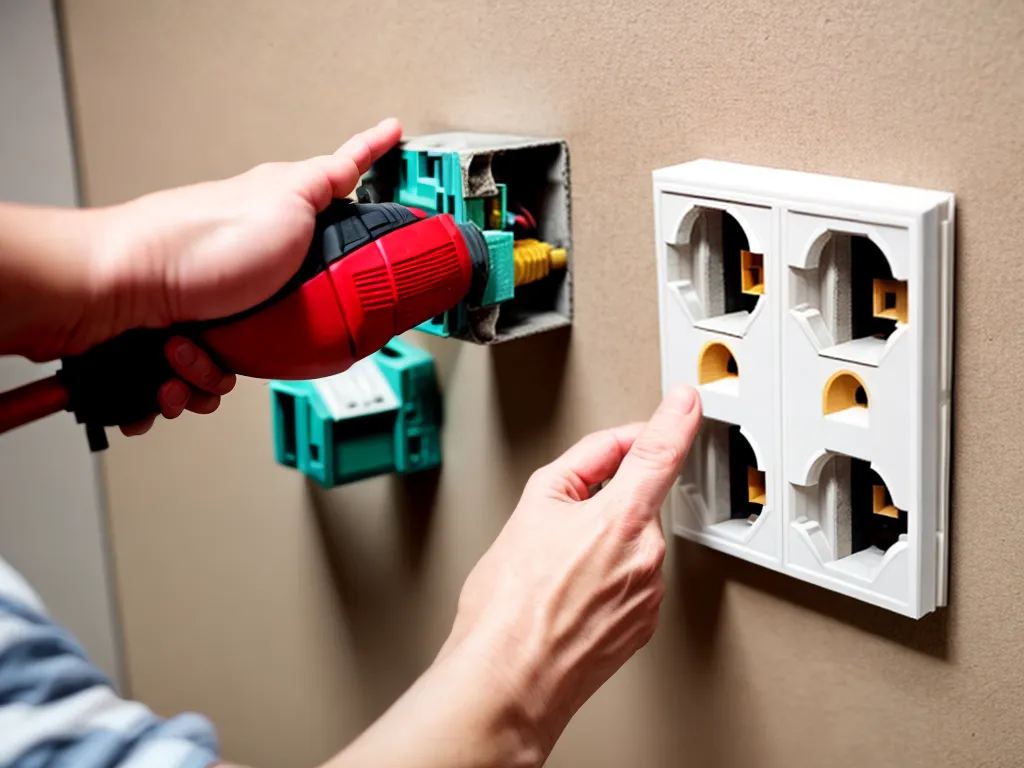
Installing new electrical outlet boxes or replacing old ones is a common DIY project for homeowners. While it may seem straightforward, there are some common mistakes that are easy to make if you're not careful. Avoiding these mistakes will ensure the outlets are installed safely and to code.
Choosing the Wrong Box for the Application
Electrical boxes come in many shapes and sizes for different purposes. Picking the wrong one can lead to issues down the road.
-
Standard single gang boxes - These are suitable for installing a single standard outlet receptacle. They are not big enough for multiple receptacles or larger devices like GFCI outlets.
-
Double gang boxes - Use these when you need to install two outlets side-by-side. Make sure the box is the correct width for the wall framing.
-
Extra duty or commercial boxes - Use boxes rated for heavy duty or commercial use for high traffic areas or areas exposed to moisture. Standard residential boxes may not hold up.
-
Low voltage brackets - For installing low voltage wiring for things like ethernet, coax, or audio cables. Do not use these boxes for standard 120V electrical wiring.
Picking the properly rated box for the intended application avoids overloading and exceeds minimum code requirements.
Not Providing Adequate Workspace
The National Electrical Code (NEC) requires specific minimum workspace clearance around electrical boxes depending on the voltage and number of wires entering the box. This is the area that wires bend within the box as they connect to devices.
-
For standard 120V circuits with 1 to 4 wires, workspace must be at least 6 inches deep (back of box to wall surface) and 2.5 inches wide on each side.
-
For more than 4 wires, the required depth increases to 2.5 inches per wire.
Not leaving enough workspace can make wires excessively bent, risking overheating and fire. Leave yourself adequate workspace by choosing a deep enough box and avoiding crowded electrical boxes.
Failing to Support Boxes Correctly
Outlet boxes must be securely and rigidly supported to avoid movement which can loosen connections.
-
Plastic boxes should have built-in mounting ears for screwing directly to studs. Use the correct size screws for the stud thickness.
-
For mounting between studs or on drywall, use specialized braces or brackets to firmly secure the box.
-
Do not solely rely on drywall anchors - they can loosen over time. Use anchors rated for the weight of electrical fixtures.
Proper support prevents motion and ensures a durable, safe electrical connection.
Not Leaving Access to Boxes After Drywall
Electrical boxes get covered with finished wall materials like drywall during construction. However, the NEC requires them to remain accessible without removing permanent construction.
For flush mounted boxes:
-
Leave the box protruding slightly from the wall surface so the cover plate can be removed later for access.
-
Use an extension ring on boxes mounted too far back.
Buried boxes will have to be uncovered if wiring ever needs to be accessed,avoiding this extra work later.
Poor Cable Clamp Usage
Cable clamps are required where cables enter metal electrical boxes to protect the wire insulation from being cut by the sharp box edge.
-
Use NM cable clamps for standard NM (Romex) cable. Match the clamp size to the cable outer diameter.
-
Use snap-in plastic bushings for flexible armored cables like MC or AC cable.
-
Only bring one cable through each clamp or bushing.
Improper or missing clamps can allow cables to be damaged, risking ground faults, arcing, and fires.
Making Improper Knockout Removals
Electrical boxes provide knockouts that must be removed to bring cables into the box. Improper knockout removal can create sharp edges exposing the cables.
-
Use a proper knockout punch tool specifically designed for creating clean, rounded edges.
-
Do not use screwdrivers or pliers - these can fragment the edges.
-
Remove any burrs or sharp fragments with a metal file.
Clean knockout removal reduces the risk of cable insulation getting pierced by metal shards.
By avoiding these common mistakes, you can install robust, safe electrical boxes to code. Pay close attention to box selection, support, workspace, accessibility, clamps, and knockouts. Taking care with the details ensures your outlet boxes will perform reliably for years to come. Let me know if you have any other questions!